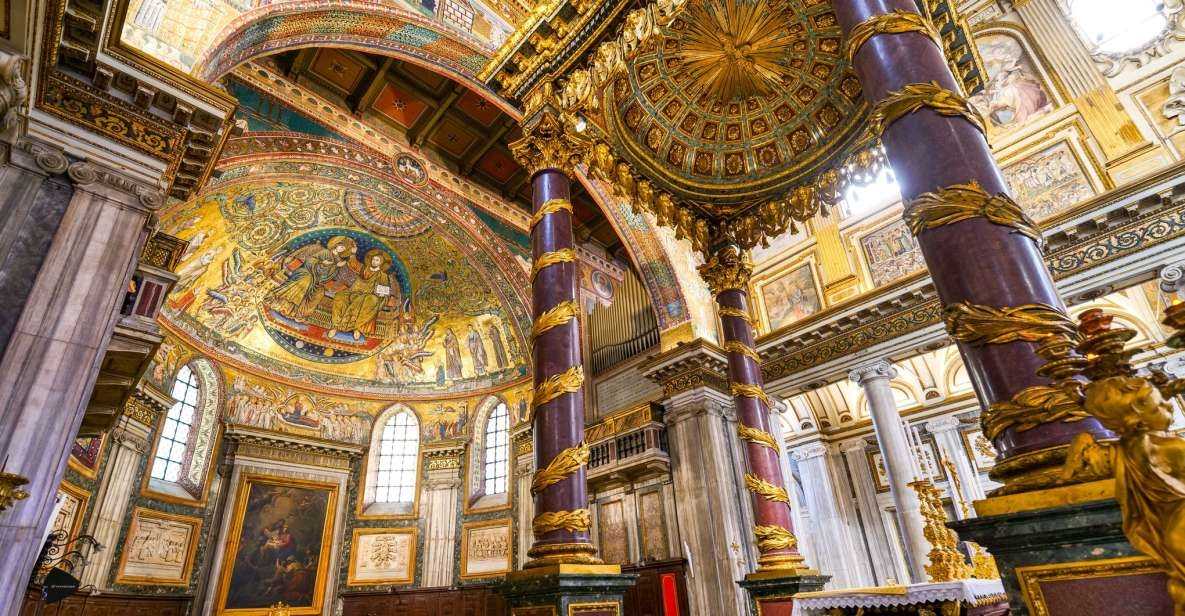Exploring the Basilica of Santa Maria Maggiore: Roman Beauty
The Basilica of Santa Maria Maggiore is one of Rome’s most significant and beautiful churches, offering a blend of history, art, and spirituality. Located on the Esquiline Hill, it stands as a testament to the city’s rich religious heritage and architectural grandeur. Whether you’re a history enthusiast, an art lover, or a spiritual seeker, this basilica provides a captivating experience.
Historical Significance
Santa Maria Maggiore is one of the four major basilicas in Rome and holds a special place in the history of the Catholic Church. It was built in the 5th century, making it one of the oldest churches dedicated to the Virgin Mary. The basilica’s foundation is steeped in legend; it is said that the Virgin Mary appeared in a dream to Pope Liberius, instructing him to build a church where snow would fall in August. Miraculously, snow did fall on the Esquiline Hill, marking the site for the basilica.
Over the centuries, Santa Maria Maggiore has been a focal point for significant religious events and papal ceremonies. Its historical layers are visible in the various architectural styles that have been added over time, from early Christian mosaics to Baroque chapels. This blend of styles reflects the evolving history of Rome itself.
Architectural and Artistic Marvels
The basilica is renowned for its stunning mosaics, which are among the oldest in Rome. The 5th-century mosaics in the nave depict scenes from the Old Testament, while the triumphal arch showcases the life of Christ and the Virgin Mary. These mosaics are a masterpiece of early Christian art, offering a glimpse into the religious and artistic sensibilities of the time.
The coffered ceiling, gilded with the first gold brought from the Americas, is another highlight. Designed by Giuliano da Sangallo, it adds a touch of Renaissance elegance to the basilica. The Borghese Chapel, with its opulent Baroque design, houses the revered icon of the Salus Populi Romani, a Byzantine image of the Virgin Mary believed to protect the city.
Visitors should also take note of the impressive bell tower, the tallest in Rome, which adds to the basilica’s majestic silhouette. The blend of architectural styles, from Romanesque to Baroque, makes Santa Maria Maggiore a living museum of art and architecture.
Visiting Tips
When planning a visit to Santa Maria Maggiore, consider the following tips to enhance your experience:
- Timing: The basilica is open daily, but visiting early in the morning or late in the afternoon can help you avoid crowds. This allows for a more peaceful experience, especially if you wish to spend time in quiet reflection or prayer.
- Dress Code: As with all religious sites in Rome, modest dress is required. Ensure your shoulders and knees are covered to show respect for the sacred space.
- Guided Tours: To fully appreciate the basilica’s rich history and art, consider joining a guided tour. Knowledgeable guides can provide insights into the significance of the mosaics, chapels, and architectural features.
- Nearby Attractions: After visiting the basilica, explore the surrounding area. The Monti district offers charming streets, local cafes, and shops, providing a taste of Roman life beyond the tourist hotspots.
- Accessibility: The basilica is accessible to visitors with mobility challenges, with ramps and elevators available. However, some areas may have limited access, so it’s advisable to check in advance.
Santa Maria Maggiore is more than just a church; it’s a journey through centuries of faith, art, and history. Whether you’re drawn by its spiritual significance or its artistic treasures, a visit to this basilica is a memorable experience that captures the essence of Rome.
